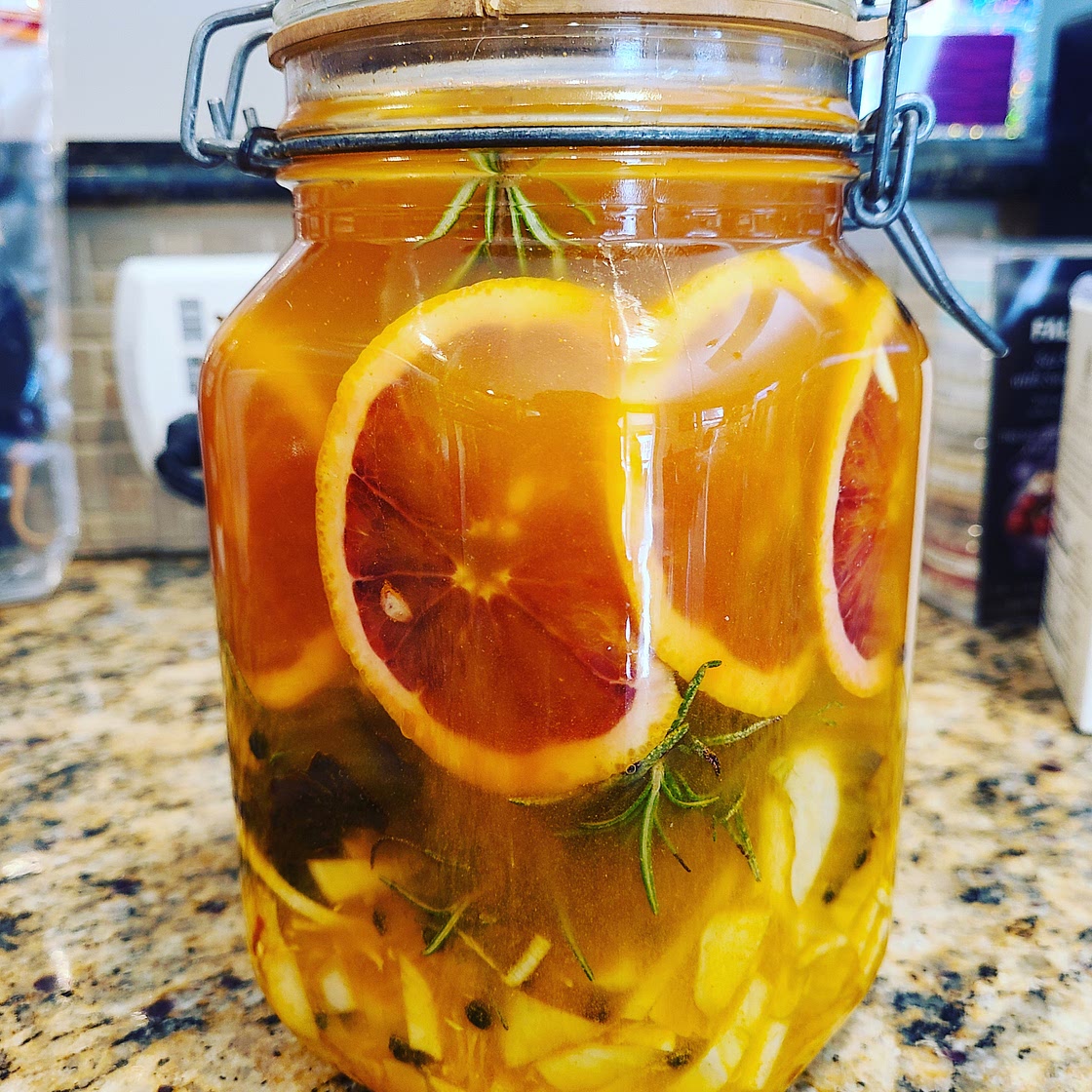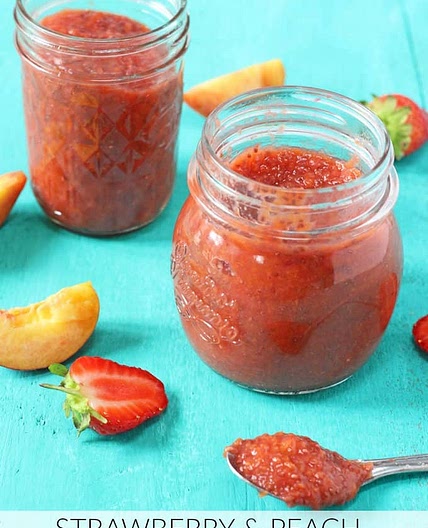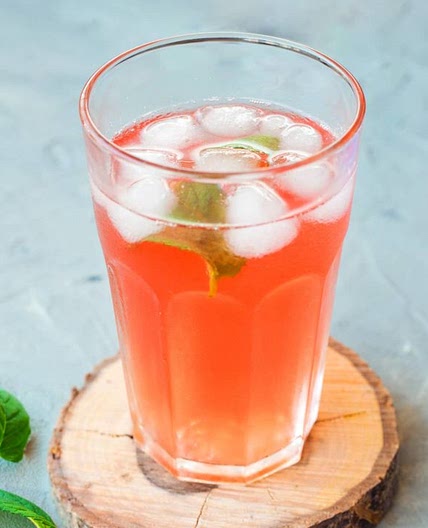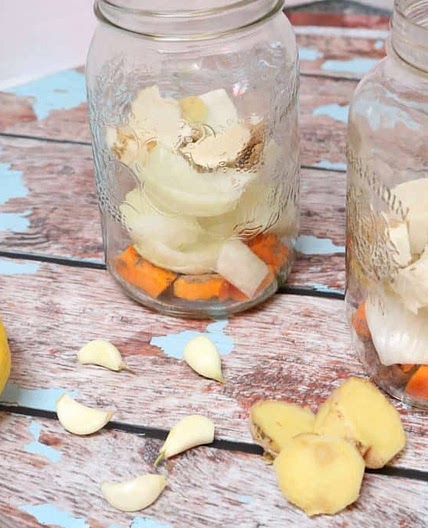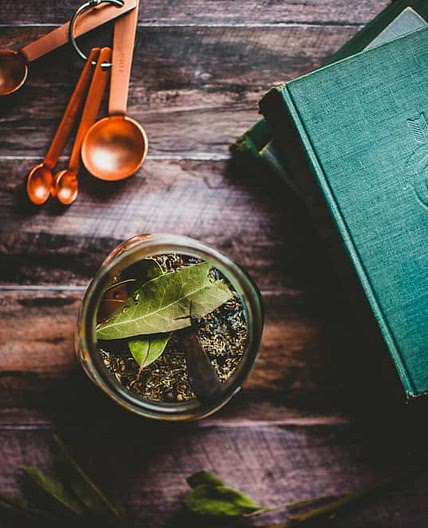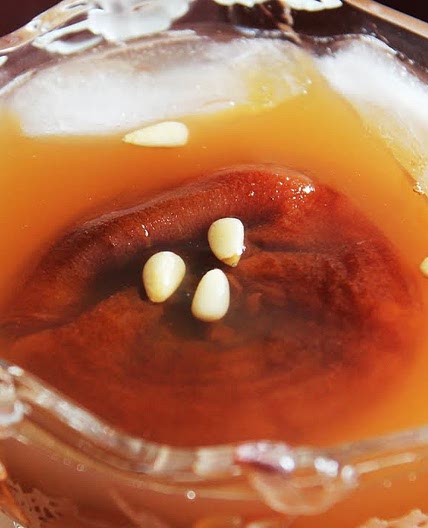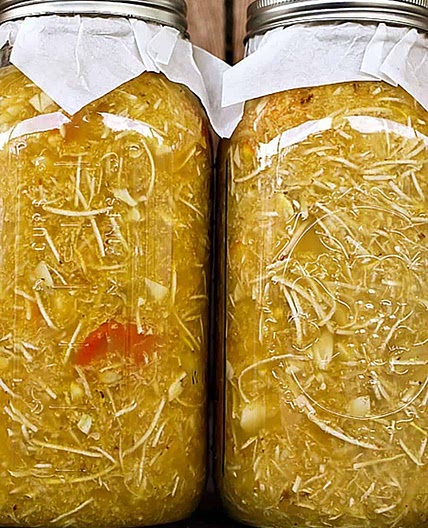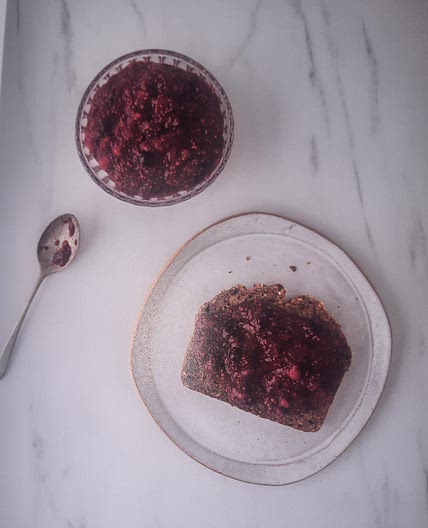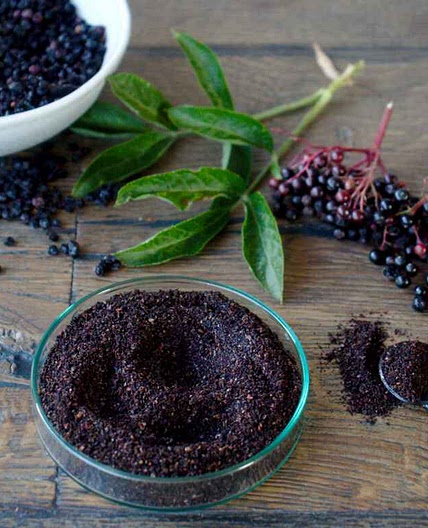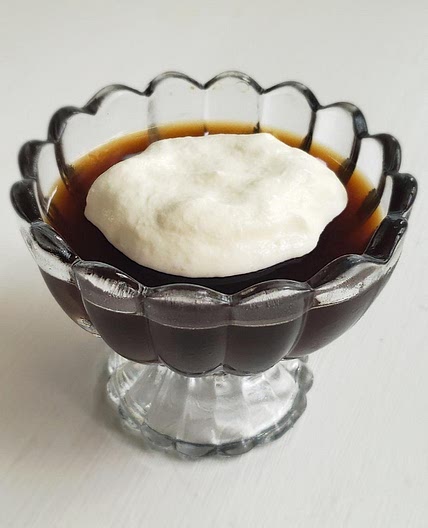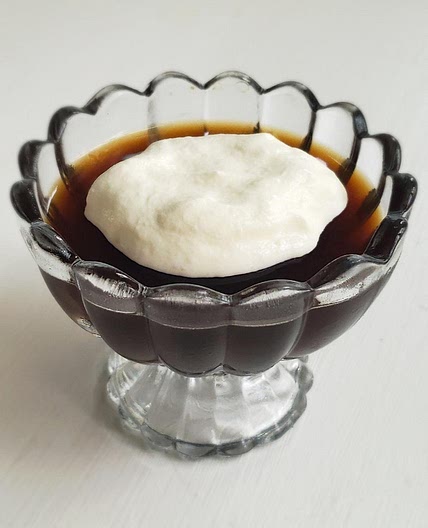By Devon Morrison
Fire Cider
1 step
Prep:1hCook:720h
Serrano: packed with Vitamin C, and also contribute vitamin A, calcium, and iron.
Habanero: contribute a host of B-complex vitamins.
Rosehips: Vitamin C, digestive aid.
Cranberries: antioxidants, vitamins A and C.
Dried chiles can be substituted for fresh, but fresh chiles tend to be higher in vitamins (like vitamin C), antioxidants, and capsaicin, which can degrade during the drying/smoking process. Dried chiles will still retain a significant amount of the micronutrients, however, so if dried is all you have, chuck 'em in.
This recipe calls for serrano and habanero peppers, as they're packed with micronutrients and readily available in most grocery stores. However, if you can get your hands on them, scotch bonnet peppers contribute all the same vitamins and minerals as serranos and habaneros, while also contributing an array of immune-boosting flavonoids. If you can get all three, so much the better!
Updated at: Thu, 21 Aug 2025 16:37:38 GMT
Nutrition balance score
Uh-oh! We're unable to calculate nutrition for this recipe because some ingredients aren't recognized.
Ingredients
24 servings
7 ozfresh horseradish
grated
7 ozfresh ginger
grated
2 ozfresh turmeric
grated
1onion
medium, chopped
1beet
sliced or grated
10 clovesgarlic
crushed
1blood orange
sliced
1lemon
sliced
1lime
sliced
1serrano pepper
chopped
1habanero pepper
chopped
6sprigs fresh thyme
6 sprigscilantro
3 sprigsfresh rosemary
1 spriglemon balm
1 sprigmint
1 sprigsage
6cloves
3cinnamon sticks
3cardamom pods
crushed
1 Tbspwhole peppercorns
1 pinchcumin seeds
1green tea bag
rosehips
cranberries
3 cupsapple cider vinegar
½ cuphoney
Instructions
Step 1
1. Gather all your ingredients and layer them into a 1-gallon (or larger) jar. For the herbs, there's no need to remove the leaves from the stem, they can be added intact. 2. Top up the jar with apple cider (or other raw) vinegar, leaving an inch to a half an inch of head space. You'll want to use at least three cups of vinegar, but you can use more if space is available in your jar. Place the jar in a cool, dark spot for 14 to 60 days. You can steep the cider for longer, but there's likely very little benefit to a steeping time longer than three months. 3. Once you're satisfied with your steeping time, strain the mixture into a second jar using a colander or mesh strainer. There may be a layer of fine sediment at the bottom, which won't reduce the nutritional or anti-inflammatory value of the finished cider, but if you prefer a "clear" finished product, you can strain the cider through a cheesecloth to remove the sediment. 4. If desired, add 1/2 cup of honey to taste. Maple syrup can be substituted for the honey to make a vegan-friendly cider, but you'll lose out on the antibacterial, antioxidant, and anti-inflammatory properties of the honey. 5. Store in an airtight jar for up to 1 year. Because of the high acid content of the vinegar, the finished cider will never truly spoil or "go bad," but the health benefits and micronutrient content may degrade over time. Enjoy an ounce of cider a day for the health benefits, and as much as three ounces a day to boost your immune system during a bout of cold or flue. You can also use the cider in salad dressings, smoothies, and mocktails. You can puree the leftover steeping solids for use in dressings or wet marinades, or dry and grind into a powder for use in dry marinades and seasonings.
Notes
0 liked
0 disliked
There are no notes yet. Be the first to share your experience!
